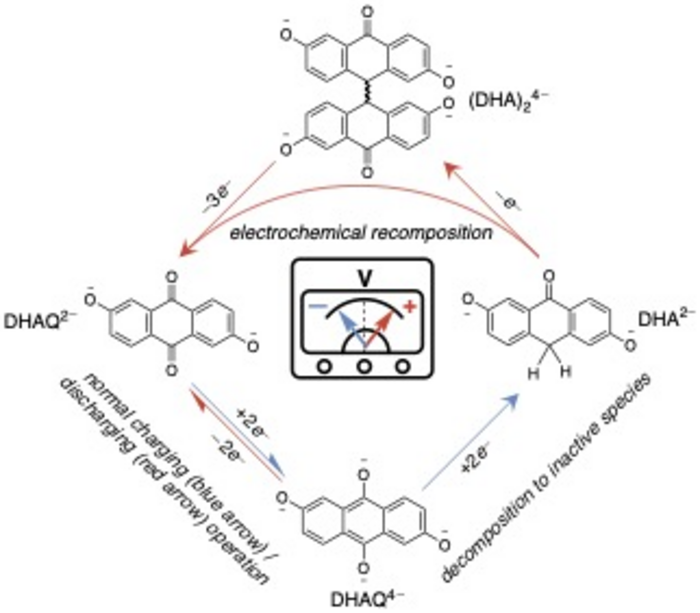Findings may create immunotherapy options for lymphomas caused by CREBBP mutations

Credit: University of Texas M.D. Anderson Cancer Center
HOUSTON — A study at The University of Texas MD Anderson Cancer Center demonstrated a potential new approach to treating two of the most common subtypes of lymphoma through manipulation of molecular programs controlled by the cAMP-response element binding protein (CREBBP). Mutations of CREBBP are frequently found in follicular lymphoma and diffuse large B-cell lymphomas (DLBCL), and allow malignant cells to hide from the immune system.
Study results were published in the Jan. 8 online issue of Cancer Discovery. Co-lead investigators, Michael Green, Ph.D., assistant professor of Lymphoma & Myeloma at MD Anderson and Ari Melnick, M.D., of Weill Cornell Medical School, reported on how inhibition of a protein called histone deacetylase 3 (HDAC3) restores immune programs lost as a result of CREBBP mutations, paving the way for potential immunotherapy approaches for common forms of non-Hodgkin lymphoma.
CREBBP is the second most frequently mutated chromatin-modifying gene in both follicular lymphoma and DLBCL. It encodes a protein that alters the activity of genes by modifying the histone proteins around which DNA is wrapped.
“CREBBP mutations are highly recurrent in B-cell lymphomas and either inactivate its histone acetyltransferase (HAT) domain or truncate the protein,” said Green.” We showed that these two classes of mutations yield different degrees of disruption of the epigenome, with HAT mutations being more severe and associated with inferior clinical outcome.”
Through CRISPR/Cas9 gene editing of cell lines and using mouse models, the research team also showed that HDAC3 selective inhibitors reverse aberrant epigenetic programming caused by CREBBP resulting in growth inhibition of lymphoma cells and restoration of immune surveillance.
“Our study characterized the molecular consequences of CREBBP mutations and identified key cellular pathways silenced as a result of unopposed HDAC3 activity,” said Green. “We demonstrated how inhibition of HDAC3 restores these pathways, suppressing growth and most critically enabling T cells to recognize and kill lymphoma cells.”
HDAC3 inhibitors appear to affect expression of major histocompatibility molecular class II (MHC class II), molecules, which are antigen presentation proteins crucial for initiating adaptive immune responses.
“The frequency of MHC class II loss in DLBCL exceeds the frequency of CREBBP mutations in this disease through unknown mechanisms,” said Green. “The ability of HDAC3 inhibition to induce MHC class II expression may have potentially broad implications for immunotherapy. We believe that inhibition of HDAC3 represents a novel mechanism-based immune-epigenetic therapy for CREBBP- mutant lymphomas.”
###
The study was funded by the National Institutes of Health (R01 CA201380, R01 CA055349, U54 OD020335 01, P50 CA192937, P30 CA016672, and P30 CA008748); the Chemotherapy Foundation; the Star Cancer Consortium; the Jaime Erin Follicular Lymphoma Research Consortium; the Schweitzer Family Fund; and the Futcher Foundation. The study was also supported with funding from the B-Cell Lymphoma Moon Shot™, part of MD Anderson’s Moon Shots Program™, a collaborative effort to accelerate the development of scientific discoveries into clinical advances that save patients’ lives. Green previously served on the Scientific Advisory Board of KDAc Therapeutics, and he owns stock equity in the company.
MD Anderson study participants included Saber Tadros, Ph.D.; Neeraj Jain, Ph.D.; Haopeng Yang, Ph.D.; Man Chun John Ma, Ph.D.; Sreejoyee Ghosh, Ph.D.; Loretta Nastoupil, M.D.; and Sattva Neelapu, M.D., all of the Department of Lymphoma & Myeloma; and Cassian Yee, M.D., of the Department of Melanoma Medical Oncology.
Media Contact
Ron Gilmore
[email protected]
713-745-1898





